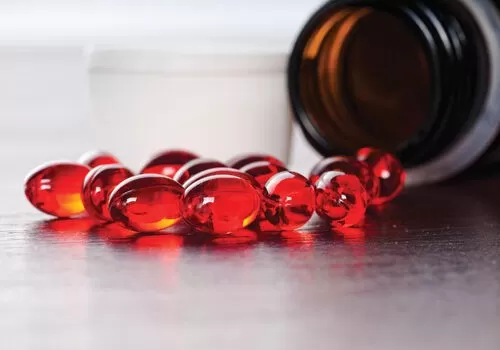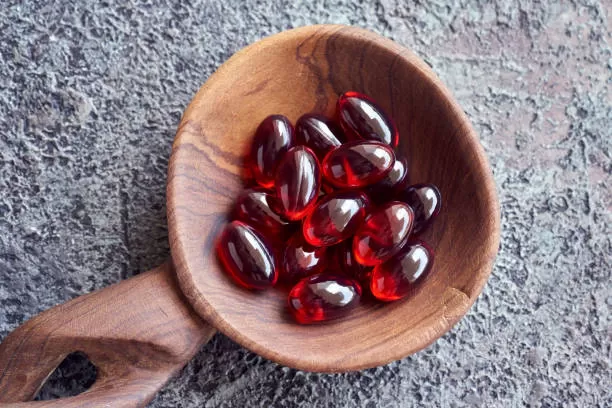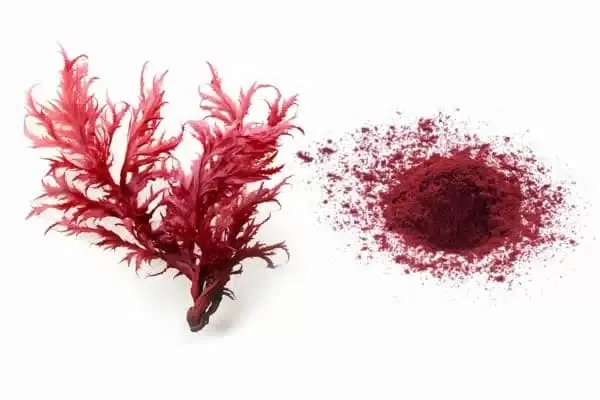- 0086-571-85302990
- sales@greenskybio.com
What is astaxanthin made from?
2025-04-29
Astaxanthin has garnered significant attention in recent years as an exceptionally potent antioxidant with numerous health benefits. From skincare products that promise youthful vitality to dietary supplements targeting enhanced physical performance and cardiovascular health, Astaxanthin presents a versatile profile that intrigues consumers and researchers alike. But what exactly is Astaxanthin, and what is it made from? This article delves into the natural sources of astaxanthin, the processes used to derive and produce this powerful compound, and its applications in human health and industry.
Astaxanthin: The Basics
Astaxanthin is a naturally occurring carotenoid, a class of pigments responsible for the vibrant red, orange, and yellow hues in various organisms. It is renowned for its exceptional antioxidant capacity, greater than many other carotenoids, including beta-carotene and lutein. The robust antioxidant properties of astaxanthin are attributed to its ability to neutralize free radicals and reduce oxidative stress, essential in combating cellular damage and supporting overall health.
Natural Sources of Astaxanthin
Astaxanthin is primarily found in marine environments, produced by microalgae, and subsequently accumulated by various aquatic organisms. The most notable natural sources include:
1. Microalgae: Haematococcus pluvialis is the most prolific producer of astaxanthin. This freshwater microalga undergoes a transformation under stress conditions, such as exposure to intense light or nutrient constraints, resulting in the synthesis of astaxanthin. H. pluvialis is often cultivated for commercial extraction due to its high astaxanthin content.
2. Krill: In marine ecosystems, krill feed on microalgae, thereby accumulating astaxanthin in their bodies. They serve as a vital part of the marine food chain, providing astaxanthin to larger predators.
3. Fish and Seafood: Astaxanthin is responsible for the reddish color of the flesh in salmon, trout, red seabream, and crustaceans like shrimp and lobster. These marine animals acquire astaxanthin by consuming algae or krill.
4. Yeast: Some yeast species, such as Phaffia rhodozyma, are capable of producing astaxanthin, although to a lesser extent compared to microalgae.
The Process of Astaxanthin Production
To meet the growing demand for astaxanthin in dietary supplements and cosmetics, both natural extraction and synthetic production methods are employed:
1. Natural Extraction:
- Microalgae Cultivation: The primary method of extracting natural astaxanthin involves cultivating Haematococcus pluvialis in controlled environments. These cultivation systems utilize specialized techniques to induce stress conditions, promoting astaxanthin synthesis. The algae are harvested, dried, and processed to extract astaxanthin using solvents or supercritical CO2 extraction.
- Krill and Seafood: Though available, the extraction of astaxanthin from krill and salmon is less common due to logistical challenges and sustainability concerns.
2. Synthetic Production:
- Synthetic astaxanthin is chemically engineered in laboratories, primarily using petrochemical derivatives. While it offers a cost-effective alternative, synthetic astaxanthin lacks some of the nuances found in its natural counterpart, such as the presence of additional beneficial compounds found in microalgae-derived products.
Comparative Quality: Natural versus Synthetic
When choosing between natural and synthetic astaxanthin, understanding the differences in quality, efficacy, and application is crucial:
- Bioavailability and Efficacy: Research suggests natural astaxanthin from algae sources provides superior bioavailability and efficacy in neutralizing free radicals compared to synthetic forms. The matrix of compounds present in natural astaxanthin enhances absorption and offers additional health benefits.
- Sustainability: Cultivating microalgae for astaxanthin extraction presents an environmentally sustainable approach, relying on renewable biological processes. Conversely, synthetic production relies heavily on petrochemicals, which are less sustainable and environmentally friendly.
- Applications: In industrial applications, synthetic astaxanthin is commonly used in animal feed, particularly in aquaculture, to enhance the pigmentation of farmed fish like salmon and trout.
Applications and Health Benefits
Astaxanthin is extensively utilized across various industries, revered for its diverse applications:
1. Dietary Supplements: Astaxanthin supplements are popular for their antioxidant capabilities, purported to support cardiovascular health, enhance immune function, and improve skin elasticity and hydration. Additionally, its anti-inflammatory properties make it appealing for joint and muscle health.
2. Cosmetics: Leveraging its skin-protecting properties, astaxanthin is included in skincare products designed to combat signs of aging, improve hydration, and offer UV protection.
3. Aquaculture: As a pigmentation agent, astaxanthin is frequently used in aquaculture feed to achieve desired flesh coloration in salmon and other fish species.
Conclusion
Astaxanthin stands out as a powerful antioxidant derived from natural sources such as microalgae, krill, and seafood. Its production can be achieved through natural extraction or synthetic processes, with natural astaxanthin offering superior quality and sustainability. As research continues to uncover the impressive health benefits and versatile applications of astaxanthin, it solidifies its position as an invaluable asset both in health and industry. Whether aiming for improved health outcomes or enhanced product formulations, astaxanthin presents a promising option enriched by nature.
-
What are the benefits of astaxanthin?
2025-04-29
-
What Is Astaxanthin Supplement
2025-04-29
-
What Is The Function Of Astaxanthin
2025-04-29
-
what is astareal astaxanthin
2025-04-29














